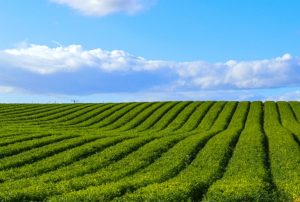Agriculture accounts for a minimum of 80% of the planet’s ammonia use. The question though is why farmers use these particular fertilisers. Ammonia is very effective and providing nitrogen to the soil will augment crop yields. Some crops need more nitrogen than others. Soybeans, wheat, and corn are good examples. We want to go over some insights into the advantages of ammonia fertiliser and why people like it more than nitrate-based ones.
A tale of two fertilisers
 Two kinds of nitrogen fertilisers exist. These are nitrate-based and ammonia-based. Plants take nitrate in and convert it to ammonia. By directly fertilising with it, you can bypass one step in the process. This would make things seamless for the plant.
Two kinds of nitrogen fertilisers exist. These are nitrate-based and ammonia-based. Plants take nitrate in and convert it to ammonia. By directly fertilising with it, you can bypass one step in the process. This would make things seamless for the plant.
Also, ammonia-based fertilisers come with a positive electric charge. So, they’re attracted to the negatively charged soil colloids. It ends up being not as accessible to the plants. This is not completely a negative detail though. Since the ammonia is attached to the soil colloids, irrigation and heavy rain can’t leach it away.
As fertiliser, ammonia can increase the soil’s pH levels. Even though farmers need to avoid soil that is overly acidic, a greater pH level tends to be a positive thing. It means all nutrients are more accessible to the plants.
Another consideration when choosing between the two types of fertilisers is soil temperature. You need to think about the time of year too. Ammonia doesn’t do its work as well below 50ºF or 10ºC. So, it is better for summer applications over winter ones.
Types
If a farmer decides the conditions are suitable for ammonia-based fertilisers, they then need to determine what type to use. Let’s look at the different ones and why farmers employ them.
Ammonia nitrate
Firstly, there is ammonia nitrate fertiliser. These come with some of the highest nitrogen percentages if you compare to other kinds. They are a wonderful option for spring and fall applications, as well as side dressing corn.
Ammonium nitrate fertilisers have specific characteristics, including a dry granular form. They are controlled with limited supply too as you can use them in explosives. These products have 33-34% nitrogen. Farmers can spread them evenly over wide distances because of the high density. A mix of 50% nitrate and 50% ammonia exists for delayed and immediate nitrogen supply to plants. Lastly, they are great for top-dress and pasture applications.
Ammonia sulphate
Secondly we have ammonia sulphate fertiliser. This is another kind of dry granular product that contains 24% sulphur and 21% nitrogen. Farmers like it for areas that need both sulphur and nitrogen. When utilised on alkaline soils, you need to water or incorporate it in to prevent nitrogen loss.
Due to the nitrification procedure, it leads to more acidic soil than if you use ammonium nitrate. Since the concentration is fairly low, it is also not an ideal source of nitrogen.
Anhydrous ammonia
Finally we have anhydrous ammonia fertiliser, a liquid under pressure product. It holds an impressive 82% nitrogen content. It is wonderful for fall side-dressing corn and plough-down. In addition, it works for spring pre-plant, but other goods are better during the period thanks to the cooler weather.
What we have here is an extensively used source of nitrogen for plants and crops. Anhydrous means there is no water present. Businesses find this to be an easy-to-access product. What’s more, farmers can apply it with ease.
The biggest consideration with anhydrous ammonia is how dangerous it can be when mishandled. It seeks out moisture sources, including someone’s skin, throat, or eyes. Once in contact with these body parts, it can do a lot of damage. It dehydrates the section of the body.
Talk to us about fertiliser
At JS Hubbuck Ltd, we have multiple fertilisers available for you to use. They will help farmers with their crop-growing efforts. Our products are high in quality and competitively priced too. This makes our establishment the best place to shop for products.
So, if there is anything we can do for you, please get in touch.
